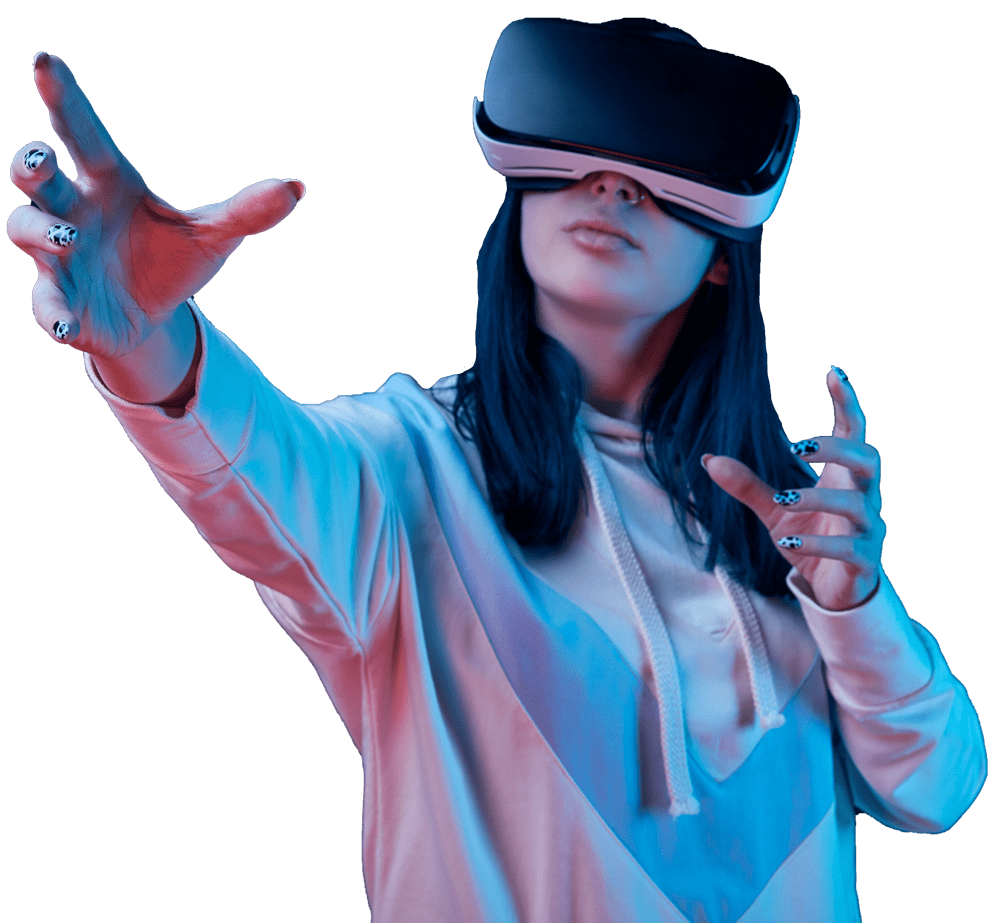Quick Links
Our Expertise

13 September 2023
Blog

In the age of rapid growth of technology, we notice various innovations in the market which may have been unimaginable before.
Among these innovations, there is the metaverse.

The Metaverse is a unique, immersive and virtual environment, and it is rapidly taking over the internet.
The actual word ‘Metaverse’ generally indicates a virtual world that lies beyond or extends the physical world. The specific word was coined in the sci-fi novel Snow Crash written by Neal Stephenson in 1992. However, in the technical term, it is a virtual reality space that enables the users to interact with a computer-generated environment and other users.
This is a new version of the internet, supporting 3D virtual environments by personal computing, virtual reality (VR) and augmented reality (AR) headsets. Though in a limited form, we find ‘Metaverse’ on platforms like VR chat or specific next-gen technology related to video games.

Generally, the Metaverse uses a shared virtual space allowing users to be represented by virtual avatars. In the virtual world, an avatar is a graphical representation of the user’s character.
This representation may be:
Depending on user-made decisions and interactions, these virtual worlds continue to evolve and grow.
To compete in the global market, digital marketing professionals need to keep up with the latest technological developments.
It involves understanding the Metaverse and its full potential. Marketers should know that Metaverse is not just a trendy new thing but will remain in the global market for a long time. The Metaverse is the next big thing.
First of all, marketers need to consider the value of the millennials and Gen Z as their target market. This is because they are avid users of some forms of Metaverse, such as online games and VR technologies.

Several big brands are adopting Metaverse for their promotion.
Big brands like Warner Bros, Hyundai and Gucci have already built their virtual worlds.
Industry giants like Sephora, Nike and HBO are concentrating upon getting into AR and VR experiences.
Other reputed brands such as Coca-Cola, Crockpot, and Anheuser-Busch are carefully making their move by selling non-fungible tokens which can be purchased or sold on the blockchain.
From selling virtual clothing, selling on NFTs, on branded shops in games, and providing virtual concerts and fashion shows are only some of the brands conducted in the past few years to determine how to market products to their consumers in the Metaverse.
Though Metaverse is not precisely what science fiction has shown it to be, it continues to produce remarkable results as a new platform for online marketing.

According to a global survey, it is estimated that in 2021 an approximate number of 85 million global users will experience Augmented Reality and Virtual Reality in a month.
With the rapid growth in virtual reality and augmented reality in recent years, metaverse technology successfully penetrated the internet.
Theoretically, it will comprise multiple reconcilable virtual worlds, allowing people to teleport from one experience to another quickly.
These worlds shall facilitate everything from social interactions, being a source of online entertainment, being an avenue to do online marketing, and doing much more online. One may go for placing their own virtual advertisement in the Metaverse.
In their whitepaper, Mobile Marketing Association and Culture Group have described Metaverse as “shared virtual worlds that seamlessly blend applied game mechanics, massive interactive live events (MILE), blockchain-enabled digital goods and virtual commerce.”
Facebook has taken interest enough to invest $10 billion to become a metaverse company in the next five years and proposed taking thousands of new employees from Europe apart from changing the company’s name from Facebook to “Meta”. Several other multi-national concerns are showing interest in this technology as well.
The fundamental reason is that there are so many interactive opportunities to generate attention for a company.
Take Roblox, for example. It gets more than 200 million active users every month. Half of them are not yet teenagers. They love to play hundreds of thousands of virtual games. Most of these games require brand activation.

It is a revolution in the field of online marketing. It has already brought remarkable changes for the future of online technology. Metaverse gives a surety of getting the physical world and the virtual world together with the aid of new technologies.
Such new technologies lead to the transformation in the way:
“It is a virtual environment where you can be present with people in digital spaces,” CEO Mark Zuckerberg said about the Metaverse.
Director of the technical department at Byte Isabel Perry said, “Metaverses are jam-packed with innovative marketing potential, ranging from live shopping to virtual stores, fashion shows, launching of products, and live events, content production, NFTs…”
These developments are paving the way for the real economy.
The possibilities these hybrid worlds offer are endless. It’s time for innovative brands to get involved in this new technology of the future.

Metaverse works in a way that is different from normal advertising. It aims at creating brand experiences that are more engaging and exciting and less invasive than what online viewers are experiencing with current digital advertisements.
All the traditional methods of placing online and offline advertisements such as the flagship shops, large billboards and advertisements on the web are turning out into a thing of the past.
Digitalization alone is not enough. People want it to be more interesting. For those looking to build relationships with customers from young generations today, the phrase “in real life” has taken a whole new meaning. People from every age group are showing interest in such innovations.
Although this is currently a fresh concept, many luxury brands are already creating avatar apparel since 2018, and various such brands have been collaborating with games for the last few years.
Other areas such as NFTs and collectibles have made dramatic progress, and the new technology is driving massive interactive live events (MILEs).